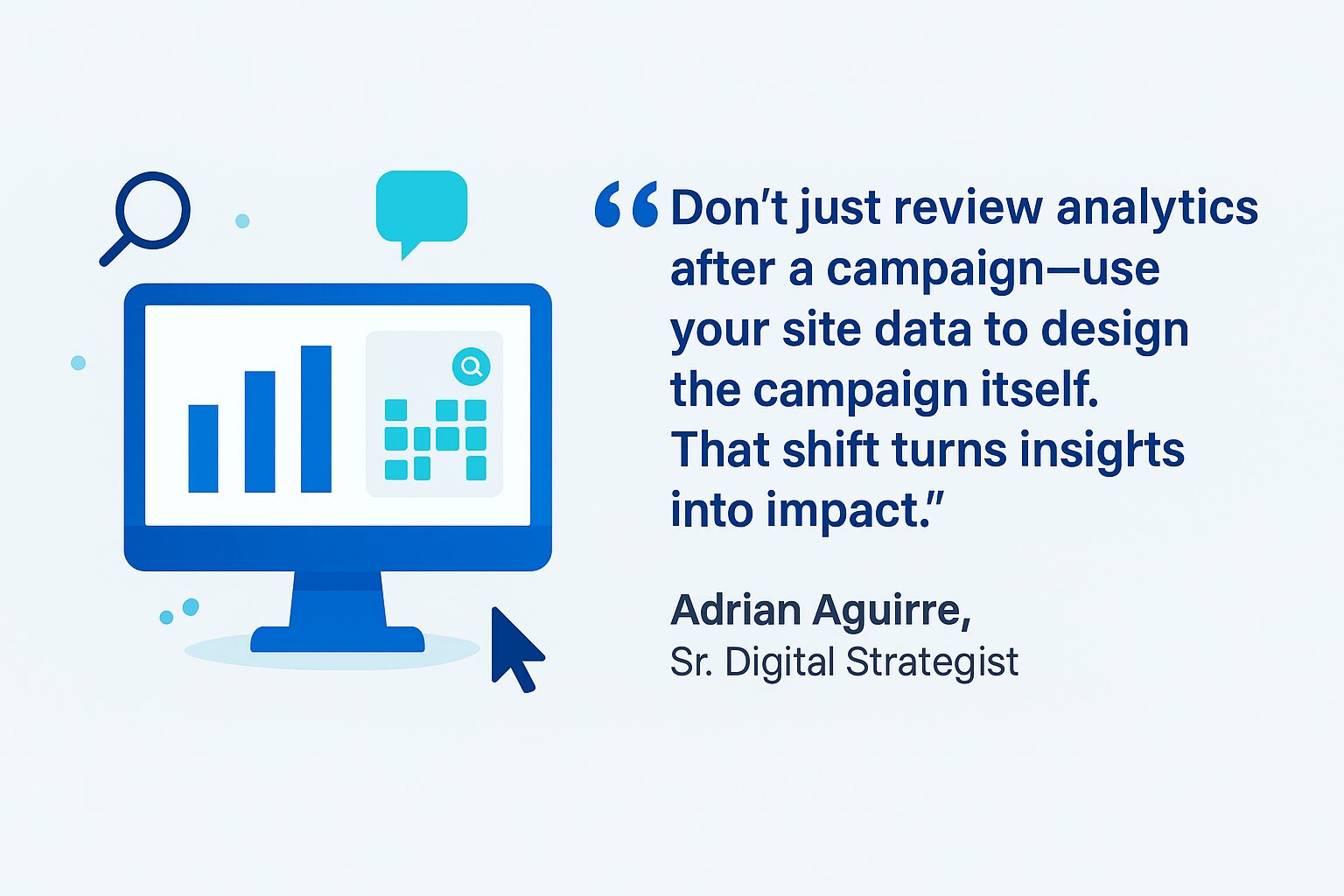TL;DR:
- Your website holds a goldmine of behavioral data, if you know where to look
- Insight from top-performing pages, search behavior, and user paths can shape campaign strategy
- Marketing leaders can use site data to shorten planning cycles and improve creative decisions
- Aligning content, UX, and CTAs with real engagement signals leads to better conversion
- Ongoing website support makes it easy to gather insights and take action quickly
Your team is under pressure to launch fast, optimize faster, and keep proving impact. But campaign success doesn’t just come from a new landing page or punchy headline. It starts with understanding what’s already working and what your audience is already telling you through your website.
The truth is, your website sees more buyer behavior than any email, ad, or call. It’s where curiosity becomes consideration. And yet, too many marketing teams overlook the insights hiding in plain sight.
Here’s how to start using your website as a strategic input, not just a destination.
1. Let Top-Performing Content Guide Campaign Messaging
Before launching your next campaign, take a look at your content analytics. Which pages are driving the most traffic? Where are users spending the most time? What topics consistently show up in organic search?
These indicators reveal what your audience actually cares about, and they can sharpen everything from subject lines to nurture emails.
Start with:
- Top organic landing pages: What terms are bringing people in, and what questions are they trying to answer?
- Most visited case studies or resources: Use these to fuel sales enablement or paid retargeting campaigns.
- Popular blog posts or topic clusters: Build campaigns around proven themes instead of guessing what will land.
By aligning campaign messaging with your best-performing content, you increase relevance and lower the risk of missed engagement.

2. Use UX Patterns and Heatmaps to Improve Conversions
Knowing what content resonates is only part of the equation. How users interact with that content tells you just as much.
Use behavior data to uncover:
- Scroll depth to see where attention drops off
- Click maps to find which CTAs are attracting (or missing) clicks
- Navigation paths to understand how users move through your site
For example:
- If a top-performing page has a buried CTA, consider testing a mid-page or sticky version
- If a button isn’t getting clicks, test different language tied to user intent
- If users drop off before hitting your offer, trim excess copy or move value props higher
These UX insights power smarter conversion rate optimization decisions that improve both paid and organic campaign performance.
3. Turn On-Site Search and Journey Data Into Campaign Triggers
Your visitors are already telling you what they want, especially when they use your on-site search bar or navigate across multiple related pages.
Pay attention to:
- Internal search terms: These are real user queries that can inspire future campaigns, new landing pages, or paid keyword tests
- Multi-touch journeys: If a user visits product pages, case studies, and then the contact page, that sequence can inform nurture flows
- Abandon points: Identify where prospects lose interest to help shape retargeting ads or follow-up content
The more you listen to behavior, the less you have to guess. And when your campaigns are based on actual intent signals, results follow faster.
How 3 Media Web Can Help
We help marketing leaders transform site data into strategic action. Our team combines technical expertise with marketing intuition to uncover insights that drive growth and then we help implement changes that make a difference.
With our ongoing website support, we:
- Audit and review behavioral data quarterly
- Translate insights into campaign-ready recommendations
- Update CTAs, landing pages, and content based on actual user paths
- Set up or refine analytics to better track campaign performance
- Collaborate with internal teams to align web updates with broader marketing goals
No guessing. Just real data, fast execution, and websites that get smarter every quarter.
